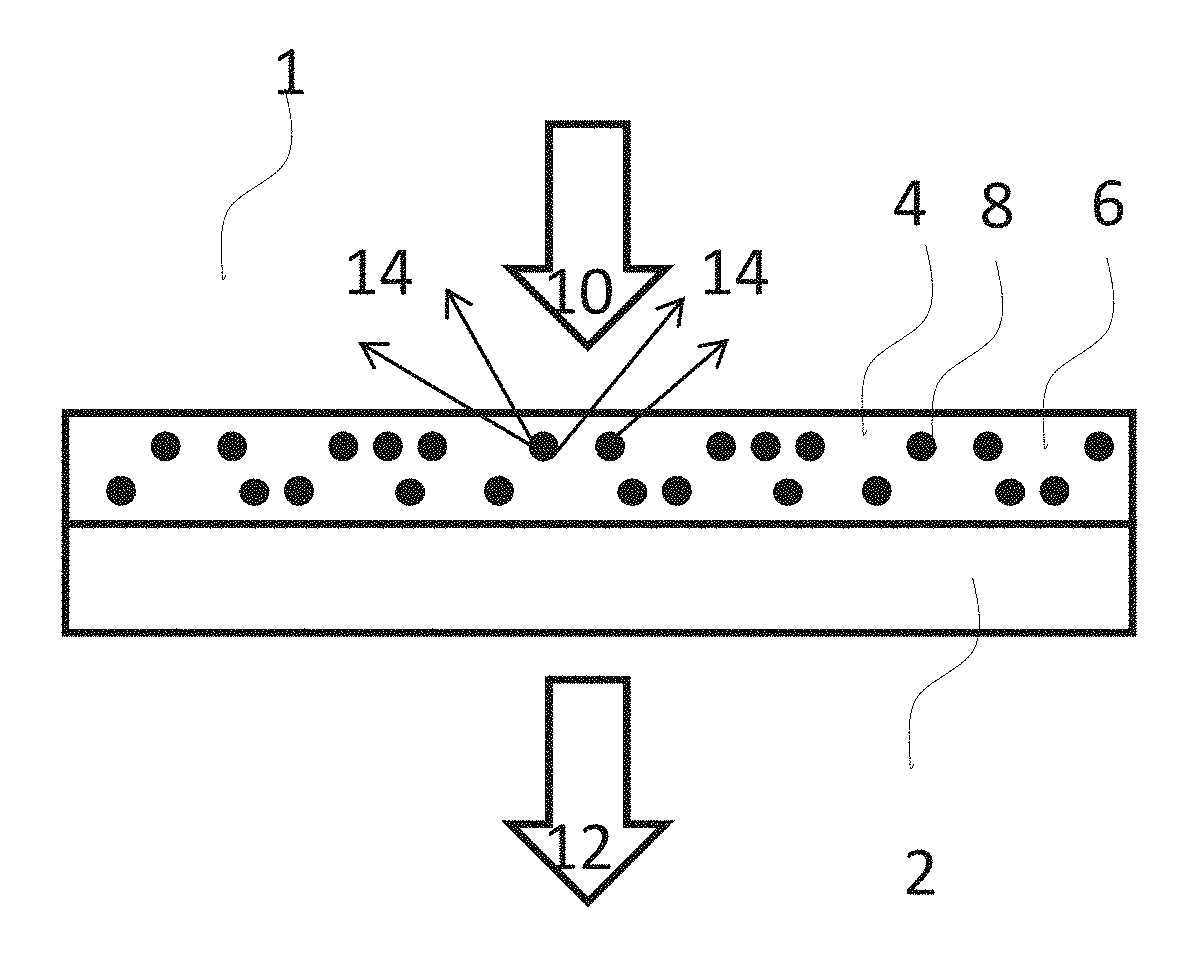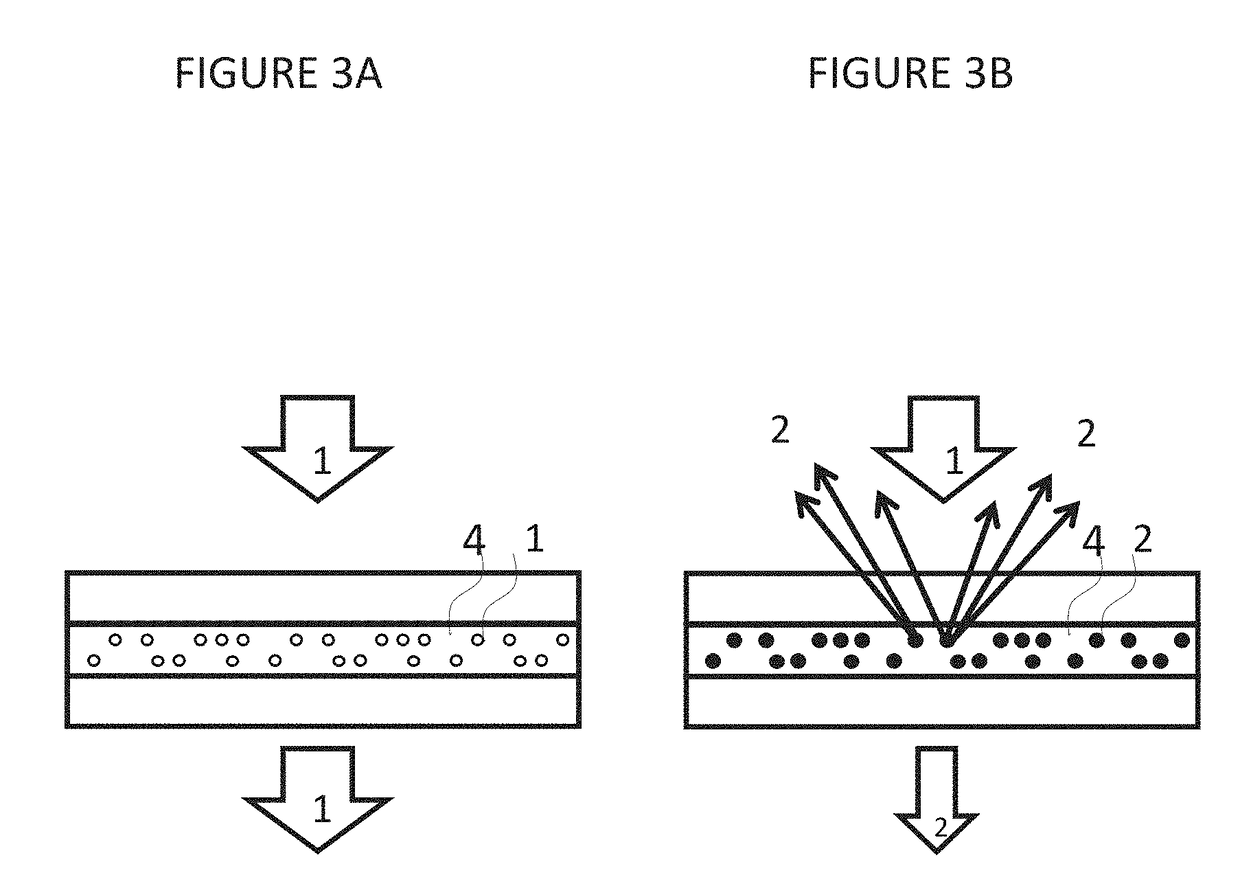Temperature responsive optical limiter, composition and device
a technology of optical limiters and compositions, applied in the direction of door/window protective devices, polarising elements, instruments, etc., can solve the problems of high production costs, high production costs, and high production costs of filtering devices, and achieve enhanced dyes or pigments, nanoparticles and/or microparticles, and the effect of increasing the modulation of light attenuation
- Summary
- Abstract
- Description
- Claims
- Application Information
AI Technical Summary
Benefits of technology
Problems solved by technology
Method used
Image
Examples
Embodiment Construction
[0045]FIG. 1 depicts a cross-sectional view of the thermotropic article in coated layer configuration 1.
[0046]The thermotropic coating layer 4 is composed of the host matrix 6 and the scattering nano or microparticles 8 and it is deposited on a transparent substrate 2, such as a glass window or PET sheet, by e.g. dip coating or any other wet coating, on a single window or roll to roll method.
[0047]Light enters in direction 10.
[0048]On cold days, the coating composition is transparent and allows the majority of the light and heat to be transmitted there-through and exit at the far side, in direction 12. The coating of the invention therefore provides the dwelling with energy savings by lowering heating and lighting costs.
[0049]On hot days, the coating is translucent, and light and heat is backscattered-reflected in direction 14, so it does not enter a dwelling, and the interior of the dwelling remains cool.
[0050]FIG. 2 shows a cross-sectional view of the thermotropic device in a lami...
PUM
| Property | Measurement | Unit |
|---|---|---|
| thickness | aaaaa | aaaaa |
| temperature | aaaaa | aaaaa |
| temperature | aaaaa | aaaaa |
Abstract
Description
Claims
Application Information
 Login to View More
Login to View More - R&D
- Intellectual Property
- Life Sciences
- Materials
- Tech Scout
- Unparalleled Data Quality
- Higher Quality Content
- 60% Fewer Hallucinations
Browse by: Latest US Patents, China's latest patents, Technical Efficacy Thesaurus, Application Domain, Technology Topic, Popular Technical Reports.
© 2025 PatSnap. All rights reserved.Legal|Privacy policy|Modern Slavery Act Transparency Statement|Sitemap|About US| Contact US: help@patsnap.com



